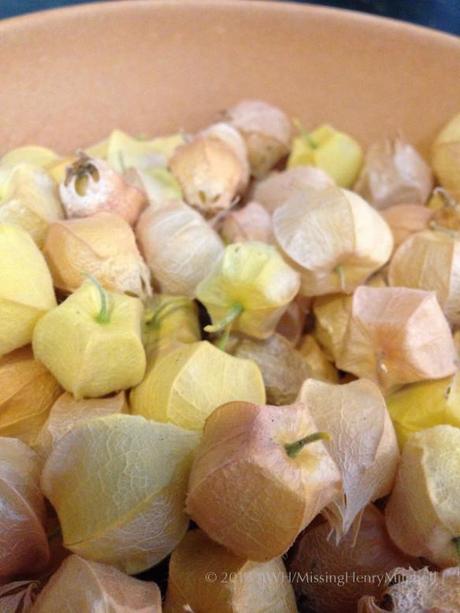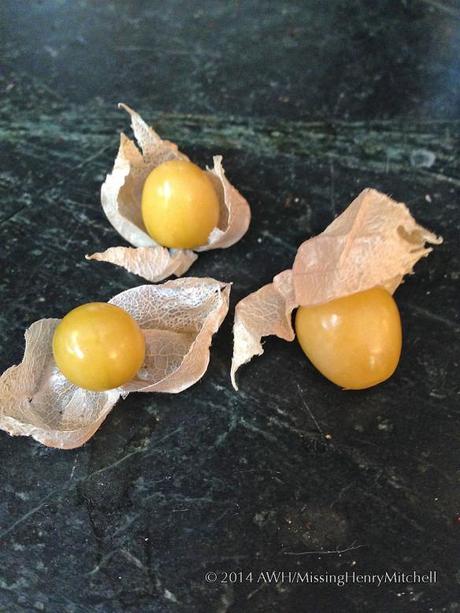
Related to tomatoes, and more closely to tomatilloes, the ground cherry (Physalis pruinosa) goes by many names, including ground tomatoes, husk cherries, and cape gooseberries.
The fruits grow under the plant’s large leaves, encased in a thin calyx that dries to a crispy, papery husk. The husk and fruit fall to the ground when they are ripe (hence the name).

Ground cherries grow encased in calyces that turn brittle when the fruit is ripe.
Large fruits measure about the size of an adult woman’s thumbnail, with a texture resembling a firm grape, and taste strongly of pineapple. I look forward to experimenting with them in cooking, if I can stop eating them by the handful, like popcorn.
In my Zone 7b garden, I transplanted seedlings about one month after the average last frost, or mid-May, and got my first fruits about six weeks later. This plant does like it hot–it seemed to double in size every day the temperature hit 90 degrees or higher.
For those who practice permaculture, this plant seeds itself easily and seems to require no inputs except for hot sunshine and whatever rain may fall. Do allow space for them–halfway through the growing season, mine are five feet tall and wide–or were, before the 8-year-old ran over a few inconvenient stems with a bicycle. The stems are rigid but not woody, a bit like basil in mid-season, and may crack or break under their own weight. Because my space is limited (and shared with bicycles), my plants are now supported with slings of garden twine, tethered to a bamboo pole. You could perhaps grow lettuce beneath them, or root vegetables, if you wished to implement companion planting.
This is a fruit that has made it into my garden’s permanent rotation. I’ll share recipes later in the summer–assuming I can quit snacking.


